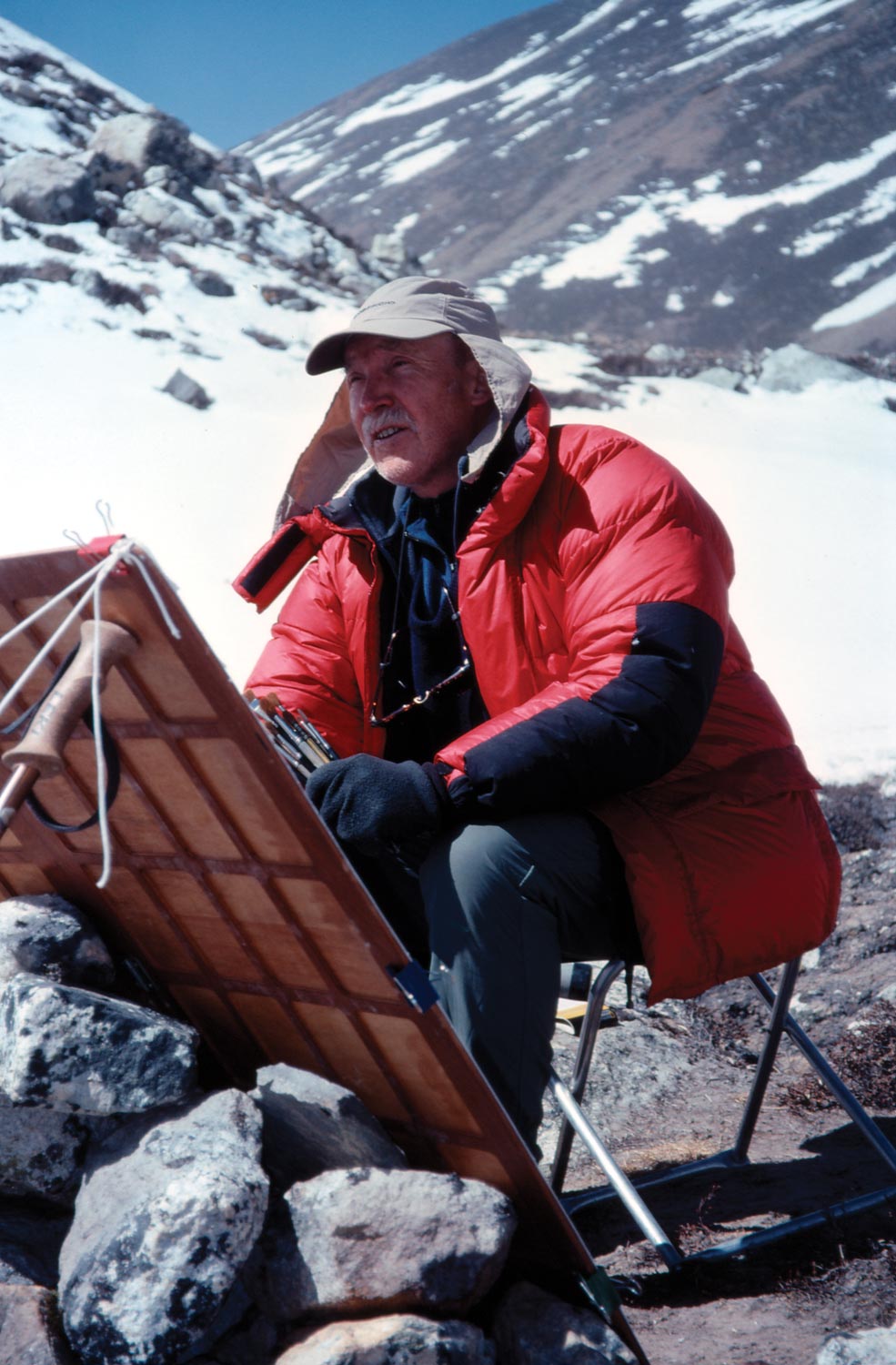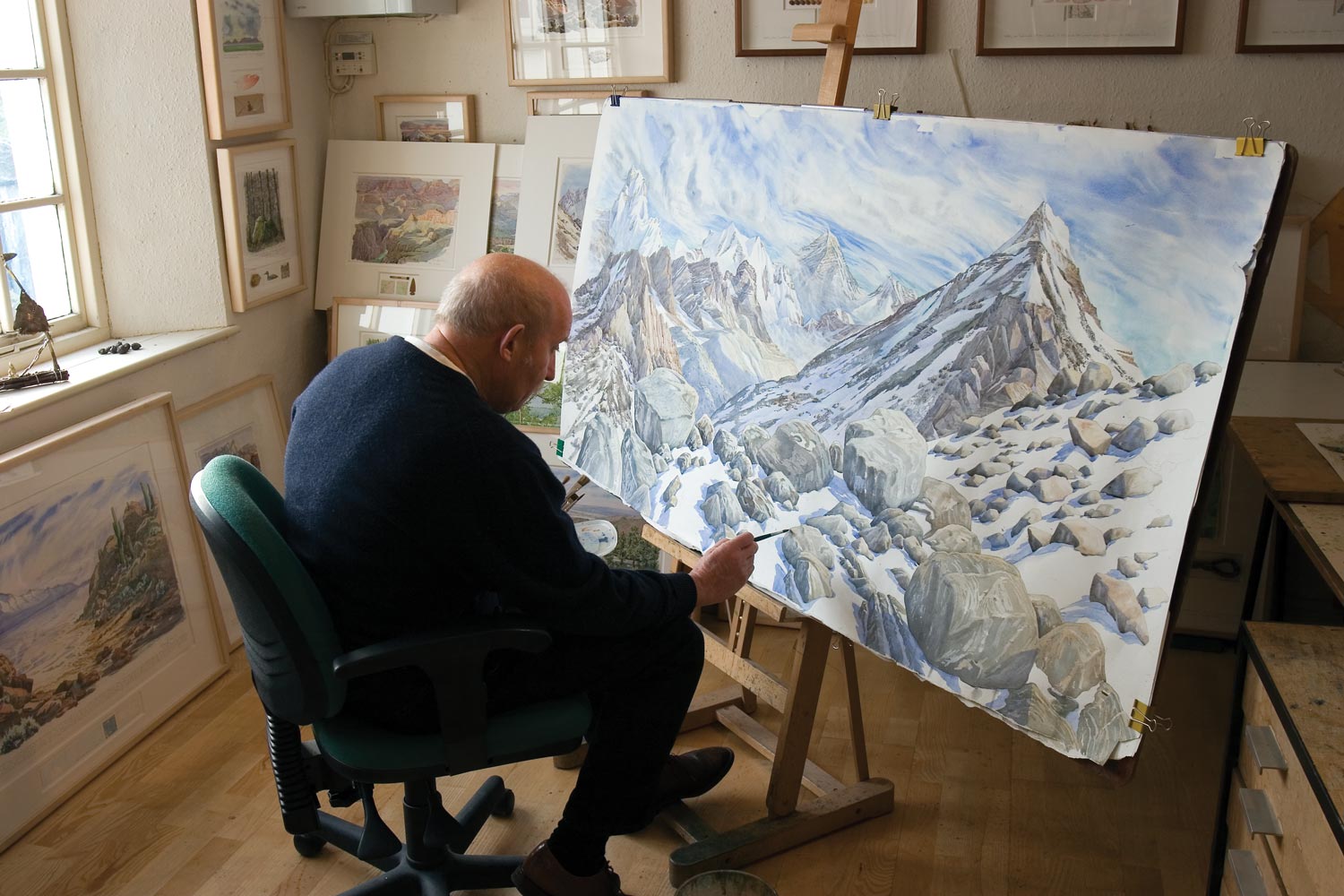In the Open Air | The Process of Plein Air
Ask someone to imagine the process of painting en plein air and they typically envision an artist with a small sketchpad and easel outside in a meadow, enjoying a leisurely day of painting. Not so with Tony Foster. His process involves trekking, camping, and painting in some of the world’s most extreme environments, often for weeks at a time.
Tony Foster hiking near Imperial Geyser, Yellowstone National Park, July 2002. Photo by Peter Murray
““The essence of a diary [is to] record one’s experiences and observations on the spot when they occur, not filtered either by memory or Nikon lens.””
Everything is as light as possible, and as simple as possible. Tony’s mixing palette is the top of a plastic container. His watercolor paintbox is tiny.
Tony Foster painting in the rainforest near Paku Falls, Mulu, Borneo, February 2015. Photo by Alison Pritchard
Foster devised a way to work underwater in order to paint tropical coral reefs.
Tony Foster drawing underwater in Little Cayman, Cayman Islands, November 2013. Photo by Laurie Cullenward
Because Tony must carry all his painting and camping supplies with him, every ounce counts. Foster developed his foldable plywood drawing board with holes cut throughout the surface to save on weight.
Tony Foster painting in Nepal, 2005. Photo by Mike Nathan
Tony never works from photographs. Generally, two-thirds of each painting is resolved en plein air. Referring to the notes and brushstrokes he has made on his paintings while on site, Foster completes his work in his Cornwall studio.
Tony Foster painting in his studio, December, 2006. Photo by Chris Chapman
Video on Foster’s Painting Process
For more interviews with Tony Foster and videos about how Tony paints, check out The Foster YouTube channel.
UK watercolor artist Tony Foster explains the methodology and philosophy behind his extraordinary wilderness watercolor paintings.
Souvenirs
Tony Foster frequently chooses “souvenirs” to include with his paintings, usually mounted within the frame. These painted or real objects create a coherent body of observation and experience and often carry symbolic meaning. Types of souvenirs in Foster’s paintings include:
Inscriptions. Extracts from Foster’s daily diary may include notes about location, weather conditions, people, animals, incidents and other subjects he encountered while working.
Maps. Small, topographical maps that show the exact painting site where Foster created the painting.
Artifacts. Natural objects or ephemera collected during Foster’s travels or created to accompany his paintings. Examples: stones, shells, leaves, dive records, talismans.
Studies. Small, fully-realized paintings of an item or view Foster encountered while painting.
Talismans. Individual or combinations of real symbolic objects associated with human interaction with the land. Examples: arrowheads, potsherds, a dreamcatcher, prayer flags, a Buddha wrapped in a Chinese newspaper.
Every object is either found on site, purchased from local artists, or created by Foster himself. Mindful of local laws, Foster only collects items that can legally be removed. When visiting U.S. National Parks, for example, he never takes fossils, arrowheads, sherds or other items he finds along the trails. Instead, he creates studies of these objects.
(1) Inscriptions — (2) Maps — (3) Artifacts — (4) Studies — (5) Talismans
Tony Foster, Angels Landing Looking North Northeast along the Virgin River, 2011. From the Journey Sacred Places.






